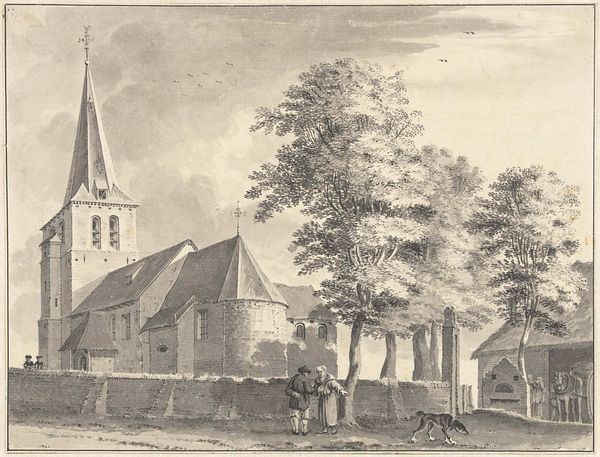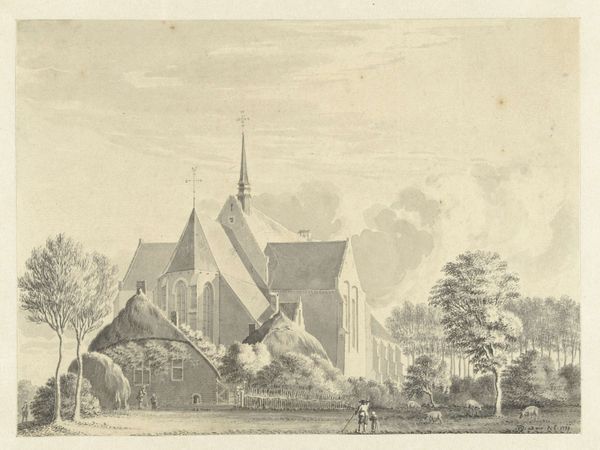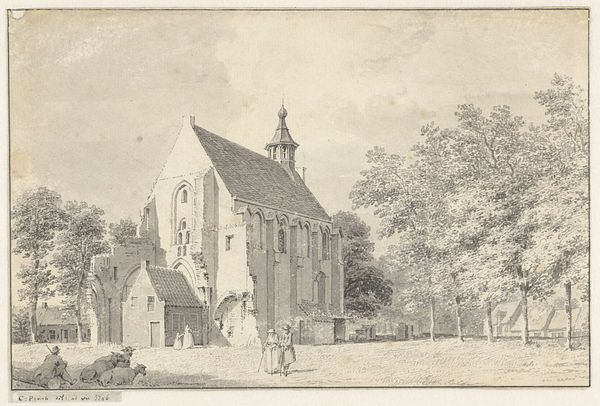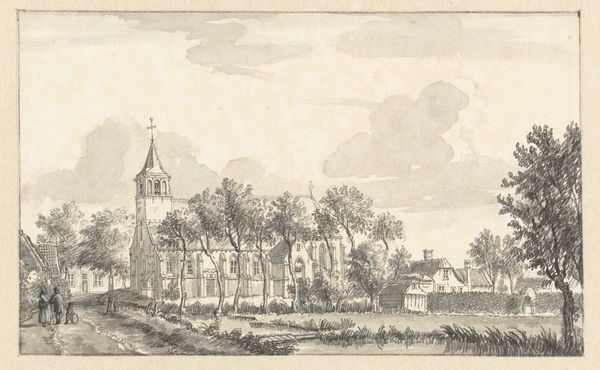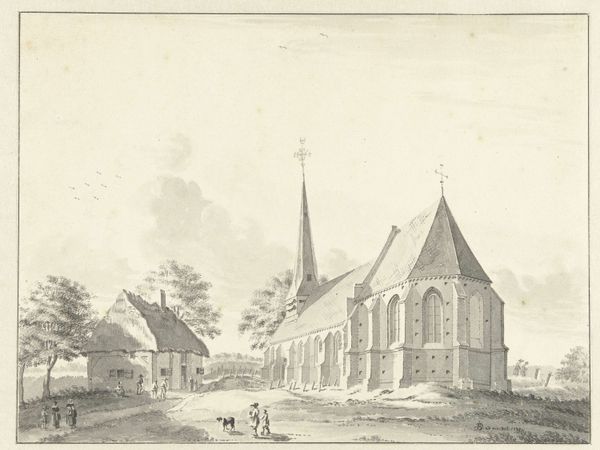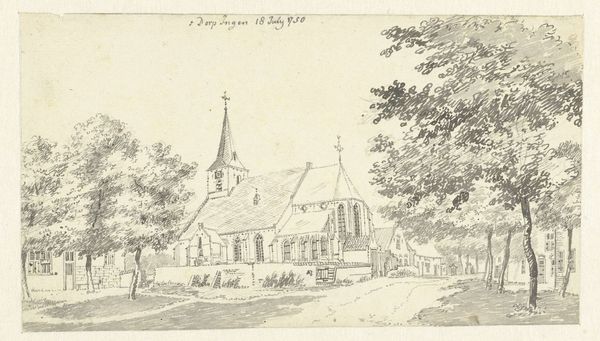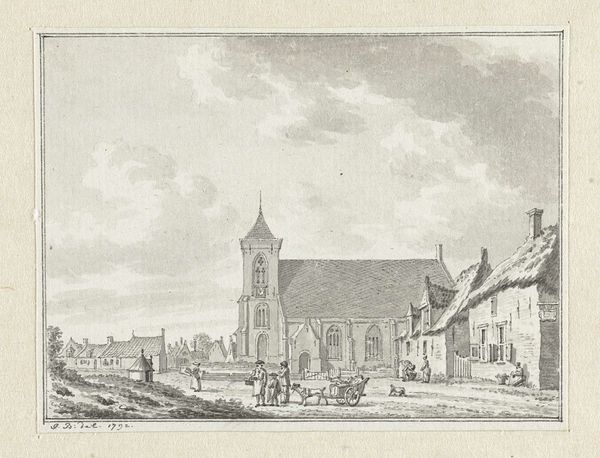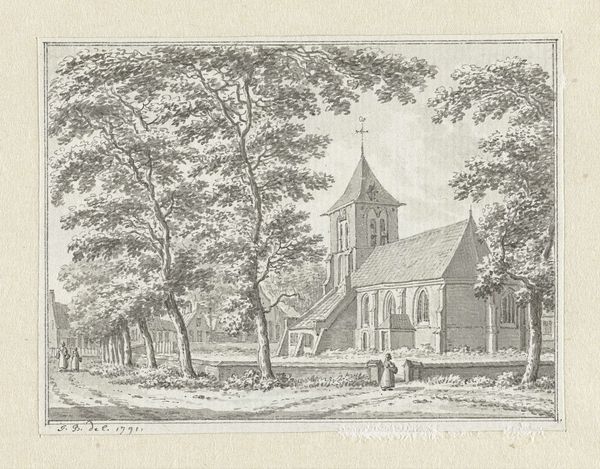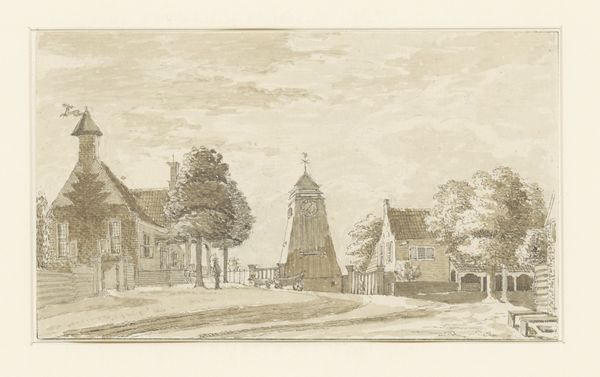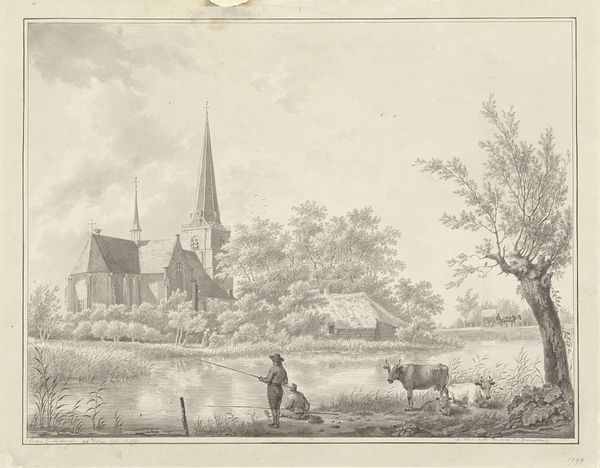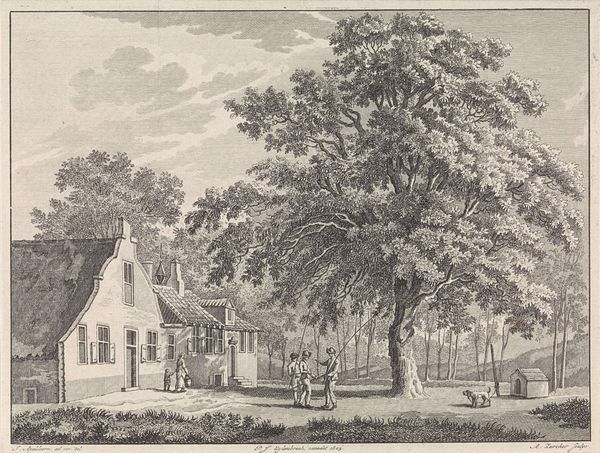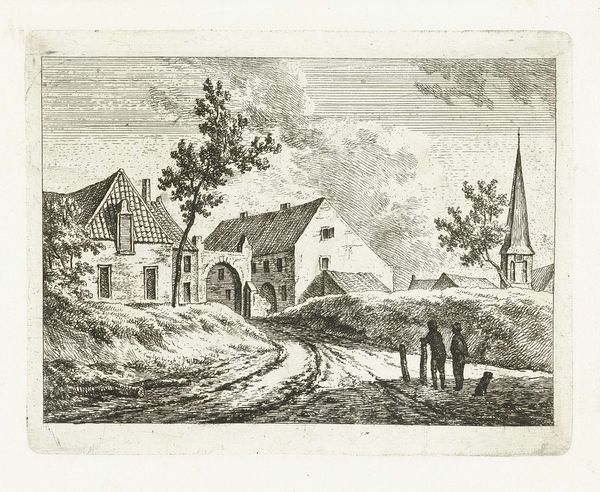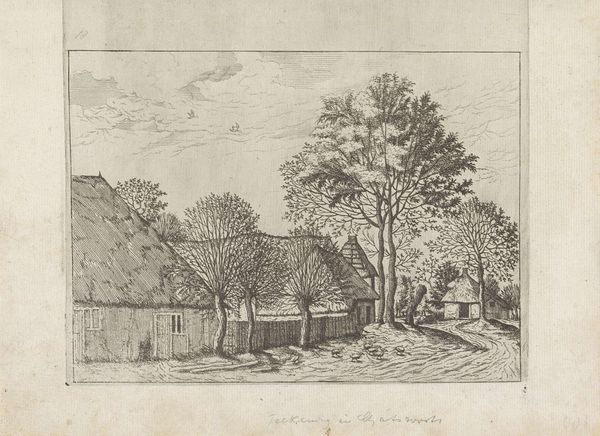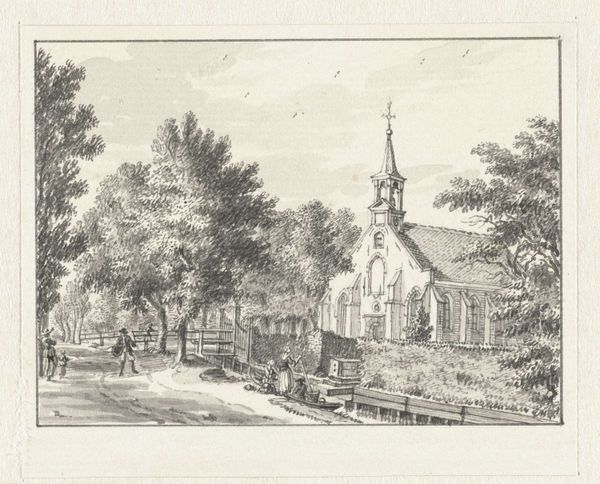
drawing, ink, pen
#
drawing
#
dutch-golden-age
#
landscape
#
ink
#
pen-ink sketch
#
sketchbook drawing
#
pen
#
genre-painting
Dimensions: height 121 mm, width 186 mm
Copyright: Rijks Museum: Open Domain
Curator: Immediately, I sense a quiet solemnity. There's something so muted about the colors that almost makes me feel nostalgic, a sense of fading memory. Editor: This is "Dorp Etten bij Gendringen," a pen and ink drawing attributed to Hendrik Tavenier. Though the date range is rather wide, spanning from 1744 to 1807, it offers a fascinating snapshot into Dutch rural life during that period. Curator: Absolutely. It speaks to me of the everyday labor, a genre painting reflecting agrarian simplicity, which given the upheavals in Europe, has interesting resonances. What role might the Church, represented centrally, have in this community? Editor: Well, it’s undeniable that the church does visually dominate. Within its historical context, the Church would have been an integral part of the community's social and administrative fabric. These institutions powerfully influence artistic creation. Curator: It makes me wonder about access too, who controlled the images and narratives surrounding it, for the purpose of maintaining a certain moral order, of constructing national identity. Editor: Exactly. Now, consider the depiction of the figures. The shepherds with their flocks, these common, almost incidental individuals remind us of the social and economic foundations of rural life. Curator: And also perhaps, about notions of piety, of rustic virtue that art helped shape at a time when Enlightenment ideals were competing for hegemony. The careful inclusion of workers speaks volumes. Is this idealized, romanticized or representative of true rural conditions? Editor: Perhaps, a touch of idealization is inevitable. We, looking at this through a contemporary lens, must be cautious not to project our present concerns, to interpret it. The very act of displaying art shapes meaning. Curator: So true! When considering its place within a gallery space, this unassuming drawing generates layered contexts about art as evidence, art as political apparatus, as shaper of society and cultural mores. Editor: It is a potent reminder that every artwork participates in an intricate dialogue with history. We construct meaning both individually and collectively. Curator: And perhaps to consider how to respectfully engage, and question such representation in contemporary discourses. Editor: I agree entirely. Examining artwork, within our institutions, must consider diverse frameworks, so that artwork resonates far beyond the limitations and privileges of art history, but also speaks directly to cultural accountability and transparency.
Comments
No comments
Be the first to comment and join the conversation on the ultimate creative platform.
